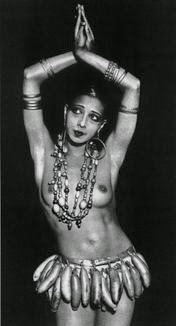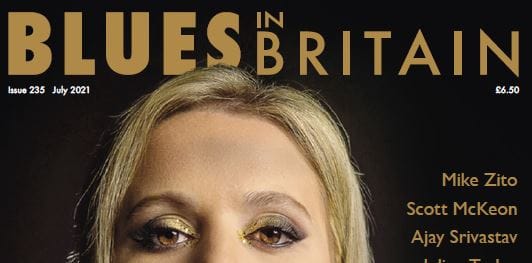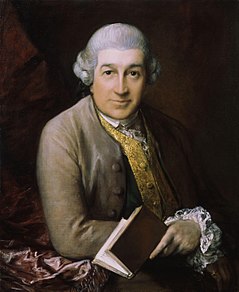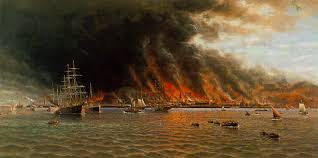PAINTING THE BLUES.
Top blues-inspired artwork, from a top blues-inspired artist.

Since discovering a link between crude early blues lyrics and rude rugby songs, I’ve long championed the connection between old blues music and the rough-and-rumble game of rugby union.
My book, America’s Gift, features a chapter on this connection. I also have two posts on dirty blues and rugby songs on this paulmerryblues.com site. (Check archives.) Here’s a link to one of the posts, if you’re interested:
https://paulmerryblues.com/2013//the-similarities-between-dirty-blues.html
Not interested? Let me tell you anyway. Both blues and rugby songs, I strongly believe, emanated from American sea shanties sung aboard U.S. merchant clippers in the 1840s; and in American ports like Mobile in Alabama, where those clippers were loaded with cargoes like cotton.
Enter blues A&R pioneer Mayo ‘Ink’ Williams.
Another link between blues and rugby union (well, American Football evolved from rugby) was one of the United States’ first black National Football League players, one J. Mayo ‘Ink’ Williams, who played for the Indiana-based Hammond Pro’s in the 1920s alongside the legendary black singer and actor, Paul Robeson. Williams also starred for Brown University from 1917 to 1920.
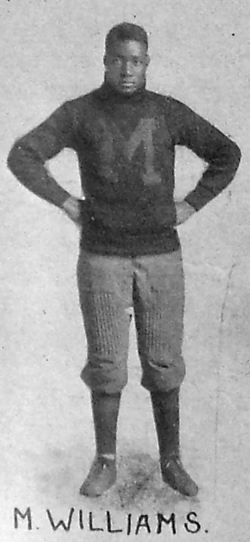
After his football career, Ink Williams ran the ‘Race’ division of Paramount Records in Chicago. He was called Ink, he said, because of his ability to sign black blues artists. A pioneer of the original Chicago Blues period, Ink discovered Ma Rainey and Papa Charlie Jackson and recorded Blind Lemon Jefferson and, later, a young Muddy Waters.
Glad All Over.
All of which brings me to the subject of today’s blog – the inspirational blues-inspired paintings of a French fine artist whose love for rock, then blues, was sparked during a rugby tour of England with his Orleans high school. That’s the original old Orleans in France, of course, not the new-fangled, more famous New Orleans in Louisiana, the one that helped spawn blues and jazz.
The Orleans artist is Jean-Claude Legros, whose school was playing rugby 55 years ago near Shakespeare’s Stratford upon Avon, Warwickshire, not far from where the game of rugby started back in 1823, in the neighbouring town of Rugby.
“I clearly remember that night, in January 1964, near Stratford-Upon-Avon, when I was first hit by the Dave Clark Five’s ‘Glad All Over’ in that small town hall. I just barged in with my high-school rugby team, a few hours after having crossed the Channel for the first time,” says Jean-Claude.
‘Glad All Over’, a smash hit single around the world between November 1963 and January 1964, was the second “British Invasion” hit in the USA after the Beatles. And 1964’s number two best-selling single in the UK, second only to the Fab Four’s ‘Can’t Buy Me Love’. For a while there, London’s Dave Clarke Five from Tottenham gave Liverpool’s Beatles a real run for the money. Take a listen …
Hammer-beat sports anthem.
Glad All Over’s hammer beat underpinned the 1963 wall-of-sound production known as the Tottenham Sound and features on other Dave Clark Five hits. The song has since become a worldwide sports ground classic, like Queen’s ‘We Are The Champions’ and ‘We Will Rock You’.
Leading Welsh rugby union team, Pontypridd, play ‘Glad All Over’ every time they score. English Premier League side Crystal Palace adopted the song as their anthem in the 1960s and their fans sing it with gusto. As do Manchester City fans, when they use the tune for their chant, “Cos we’ve got Guardiola”. That’s Pep Guardiola for the uninitiated.
Other English football league clubs using ‘Glad All Over’ include Port Vale, Rotherham, Swindon and Yeovil. In Scotland, Glasgow Rangers, Dunfermline and Partick Thistle use the tune. And in Ireland, it’s Shamrock Rovers who use ‘Glad All Over’ as their anthem.
You can gather, then, just how culturally influential this song is. And that’s just in Britain and Ireland. But back to John Claude in France. The song ‘Glad All Over’ was blaring out in the small English hall with no seats but a powerful sound system, he says. The rugby trip he was on was part of a twinning-schools program.
His passion for the blues started with Glad All Over.
“A lifetime passion started then, when the UK beat music wave burst onto the scene. My musical taste – to the dismay of partisan spirits (France likes only to plug French music. Ed) – covers most genres and sub-genres of rock, blues, soul and jazz. The result, 55 years later, is a roomful of records.
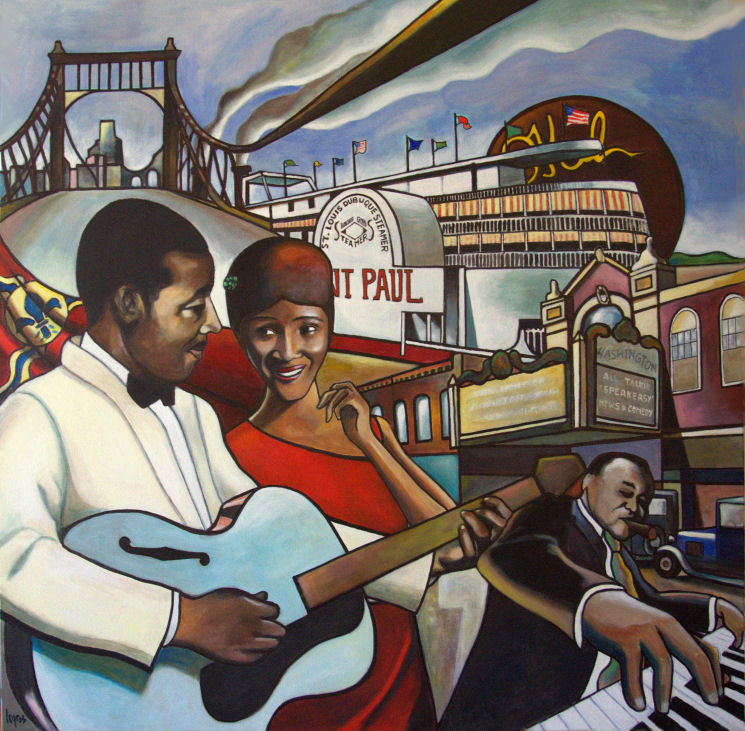
“For years, blues was just part of the general rock scene for me. It started taking a hold with its 1980s revival, but without needing Stevie Ray Vaughan as a detonator fuse. It was more a natural antidote to the cold-wave/no-guitar/no-groove craze of the moment. I soon tuned into the pre-war years I had first neglected and, progressively, seriously addressed blues’ early stages and its roots.
“In the 1990s, painting entered my life without any premeditation, and even less any artistic ability that I knew of. It was just a combination of circumstances that inspired me to undertake building a collection of blues paintings. It was 1995, and I decided to give something back in return, for all that I owed to those old blues musicians. I studied fine art theory and since retiring, all my time is dedicated to the music and painting. In 2008, I started writing musician biographies for a French blues blog, doing a portrait for each of them. This was the beginning of the collection. The feedback was positive; then I was invited to exhibit at a local blues club.
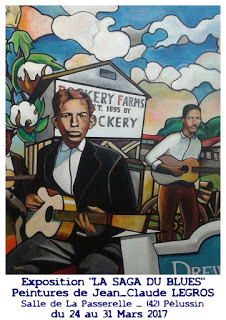
Pictures for an Exhibition.
“I now have more than 100 paintings available for exhibition, to pay my due to the creators of this music that has brought me so much. I’ve exhibited my paintings about 50 times, now, each exhibition showing about 15 to 50 pieces and intending to be informative to visitors. Every painting is accompanied by a few lines about the musician and/or scene, with a QR code allowing people to listen to a related song on YouTube. That’s why cultural and blues festivals, live music venues educational centers are the main places my work is exhibited.
Entertaining the possibility of making a dream come true, I’d love to hold a big exhibition covering blues’ entire history in the genre’s country origin, America. At the moment, I have a few paintings in the Robert Johnson Blues Foundation Museum in Crystal Springs, Mississippi and a permanent blues exhibition in Jackson, Mississippi. Other paintings helped raise funds for a Memphis Blues Foundation.
“Besides classic portraits, I do scenes showing pieces of blues history: a place, a song, a period, a label, a genre, an episode. Here I use a different, more dynamic, style. In this series, I want to illustrate the whole blues story – the told and ‘untold’ parts, from Congo Square and St. Catherine market in the early nineteenth century to the mid 1960s. This means a lot of work ahead. More recently I added a third series of paintings to my portfolio, purely visual, dark field portraits with minimal mono-colored signs. It’s kind of a game.

Last year, accompanied by a blues trio, I put on a 75mn lecture-exhibition-music mix in various French cultural venues.
More about John-Claude Legros.
John-Claude is also an administrator on The Blindman Blues Forum, a ten-year-old site where international blues lovers and performers still share on a low-speed but steady basis.
He says, “Here I regularly debate with Joseph Scott, who you mention in your book. Being personally focused on the pre/early blues period, I’ve found in Joseph a perfect – even if irascible! – examiner when I indulge in some approximation regarding the emergence of the blues.
“It’s no surprise, then, that my bedside books are Peter C. Muir’s Long Lost Blues (which binding sheets didn’t resist) David Evans’ Big Road Blues, the Abbott & Seroff’s trilogy, David Jasen’s Spreading Rhythm Around, some others and now America’s Gift since you tapped right into my favourite playground.”
I thank you for the compliment, Jean-Claude.
Check Jean-Claude Legros on Facebook and at Blues Attic Paintings, France.
